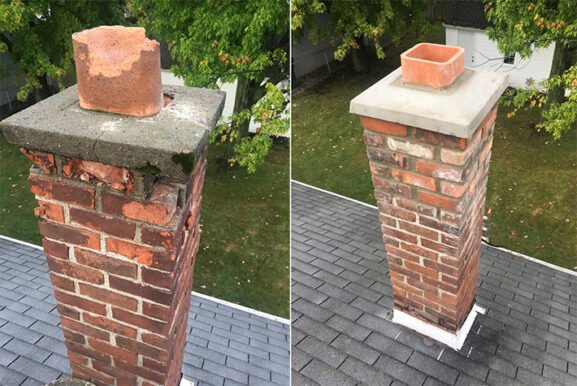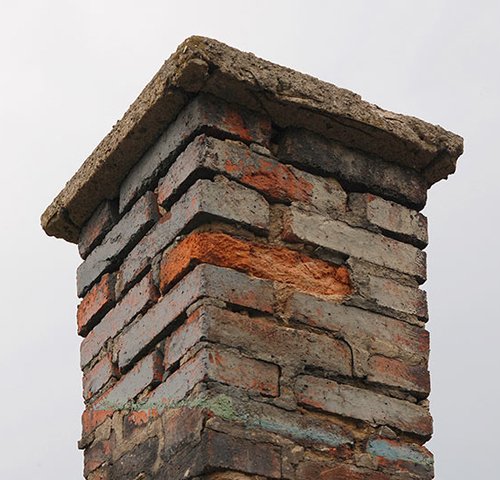Why Rapid Chimney Repair Matters More Than You Think
Key Takeaways
- Delaying chimney repair can lead to costly structural damage and fire risks.
- Rapid chimney repair ensures safer heating systems before seasonal use.
- Early repairs help prevent water intrusion and prolonged exposure to moisture.
- Addressing minor issues quickly avoids larger, more expensive repairs down the line.
How Small Chimney Issues Escalate Quickly
What starts as a small crack in a chimney can become a significant issue in just one season. Exposure to rain, snow, and fluctuating temperatures causes expansion and contraction that worsens the damage. Crumbling mortar, loose bricks, and even internal flue issues often begin subtly, but ignoring them allows moisture to seep in and compromise the structure. Once water enters, freeze-thaw cycles can destroy masonry from the inside out.
Rapid chimney repair is not about panicking over small problems. It’s about recognizing how swiftly they can develop into safety hazards or lead to chimney collapse. The cost of urgent structural reinforcement or chimney rebuilding is far greater than the price of addressing a minor defect early.
The Link Between Chimney Damage and Fire Hazards
Cracked liners, damaged masonry, and blocked flues are not just structural concerns. They’re serious safety risks. If a chimney liner is cracked or missing, combustible gases and high heat can reach surrounding wooden framing. This risk is especially high during the winter months when fireplaces or stoves are used frequently.
Also, damaged or poorly maintained chimneys increase the buildup of creosote — a highly flammable residue from burning wood. The National Fire Protection Association (NFPA) emphasizes the importance of chimney inspections to reduce fire risk. According to the NFPA, heating equipment is a leading cause of house fires, many of which are preventable through timely chimney maintenance.
Rapid chimney repair isn’t just a precaution. It’s a vital step in protecting your home and family.
Why Timing Matters for Chimney Repairs
Waiting too long to repair a chimney can narrow your repair options. Mild weather during late spring and early summer provides ideal conditions for masonry and structural work. Attempting these repairs during colder months is not only more difficult, but often more expensive, as materials don’t cure properly in freezing temperatures.
In addition, local contractors may become fully booked during peak seasons. Emergency winter repairs often come with higher costs and longer wait times. Addressing issues rapidly ensures you can schedule work at a time that’s both convenient and cost-effective.
Identifying Warning Signs Before They Worsen
Some chimney problems are obvious, like crumbling mortar or water stains on the ceiling near the fireplace. Others, like a smoky smell when the fireplace isn’t in use or debris falling into the hearth, are more subtle. These can signal damage inside the flue or structural instability.
Homeowners should be alert to:
- Efflorescence (white residue) on exterior bricks
- Loose or missing bricks
- Rust on the firebox or damper
- Persistent musty smells from the fireplace
By the time these signs are visible, damage is already progressing. Rapid chimney repair allows professionals to diagnose and correct issues before they require extensive remediation.
How Weather Impacts Chimney Lifespan
Weather plays a central role in chimney damage, particularly in areas like the Northeast. Rainwater can seep into hairline cracks, and when temperatures drop, it freezes and expands. This cycle causes bricks and mortar to break apart. Over time, the chimney can begin to lean or pull away from the house, creating structural threats.
Snow buildup and ice dams around the chimney base further complicate things, especially on older roofs. These problems aren’t always easy to spot from the ground, which is why regular inspections and quick repairs are critical.
Even in dry seasons, UV exposure wears down sealants and chimney crowns. Staying ahead of seasonal damage through rapid repairs helps maintain the structural integrity of the entire fireplace system.
Cost Considerations for Fast-Tracked Chimney Repairs
Addressing chimney damage quickly often means spending less overall. Minor repairs like repointing mortar or resealing a chimney crown are relatively affordable compared to full chimney rebuilds. The longer you wait, the more damage accumulates — and the higher the repair bill climbs.
Labor and material costs also vary by season. Scheduling repairs during the off-season or before winter demand spikes can result in better pricing and more scheduling flexibility. A small investment in fast maintenance can prevent the need for major structural fixes that could run into thousands of dollars.
Choosing the Right Professional for the Job
Not all chimney damage is immediately visible. That’s why it’s important to work with certified chimney professionals who can perform a full inspection, including interior flue assessment. Look for companies that specialize in chimney repair rather than general masonry.
A reputable technician will offer a detailed explanation of what they found, what needs fixing, and how soon it should be done. Certifications from the Chimney Safety Institute of America (CSIA) or National Fireplace Institute (NFI) are good indicators of expertise.
Rapid chimney repair should never mean rushed or low-quality work. It should mean quick assessment, timely scheduling, and effective, durable solutions.
Long-Term Benefits of Timely Chimney Maintenance
Investing in rapid chimney repair doesn’t just prevent emergencies. It improves home safety, extends the life of your chimney, and preserves property value. Insurance claims related to chimney fires or structural collapse are often denied if the issue was due to long-term neglect. Staying proactive helps ensure that your coverage remains intact.
Moreover, a well-maintained chimney increases the efficiency of your heating system, reducing energy costs and improving indoor air quality. Homebuyers also view a healthy chimney as a sign of responsible home ownership — something that can influence real estate value and inspection outcomes.
Staying Ahead of Problems With a Preventive Approach
The best time to fix a chimney is before the damage becomes urgent. Regular inspections, especially after harsh weather, help detect problems early. Acting quickly allows for simple, low-cost repairs rather than complex structural work later.
By making rapid chimney repair part of your home maintenance routine, you protect your investment, reduce safety risks, and save money over time. It’s a practical strategy that pays off year after year.

